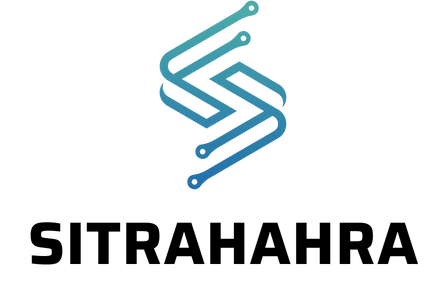Hydration is about more than just drinking water when you’re thirsty. For those who exercise regularly and especially for high-endurance athletes, maintaining the right balance of fluids is critical to performance and overall health. As athletes, you push your bodies to the limits, and this often involves intensive training, sweating, and exertion, all of which can lead to dehydration if not properly managed. Let’s delve into the subject and uncover the best strategies for optimal hydration.
Understanding Hydration and it’s Importance in Sports
Hydration, in a physiological sense, refers to the balance of fluids in your body. Water makes up a large portion of your bodily functions, including digestion, absorption, transportation of nutrients, and maintaining body temperature. When you’re involved in high-endurance sports, your body’s fluid balance can easily get disrupted due to sweat loss and increased metabolic activity.
Also to see : How Does the Installation of Blue Light Filtering Streetlights Impact Urban Sleep Quality?
As athletes, you need to understand that even slight dehydration can significantly affect your athletic performance. According to a study published on Pubmed, dehydration of just 2% can decrease performance by up to 10%. This is further corroborated by a Google Scholar article that indicates a link between hydration and cognitive function, implying that dehydration can hamper decision-making skills, a critical component of many sports.
The Role of Electrolytes in Hydration
Hydration isn’t simply about water. There’s a key component that often gets overlooked: electrolytes. These are minerals like sodium, potassium, and calcium that carry an electric charge. They play a crucial role in many bodily functions, including fluid balance, nerve function, and muscle contraction.
Also read : How Can Cognitive Training Apps Boost Brain Function in Aging Adults?
When you sweat, you lose not only water but also electrolytes, particularly sodium. This loss can lead to an electrolyte imbalance, which can cause a range of symptoms from muscle cramps to irregular heartbeat and, in severe cases, can be life-threatening.
It’s clear then, that consuming sufficient electrolytes, particularly sodium, is as important for athletes as drinking enough water. Sports drinks often include these essential minerals for this very reason. However, it’s crucial not to overdo it, as too much can lead to hypernatremia, a condition characterized by too high sodium levels in the blood.
The Dangers of Dehydration and Overhydration
We’ve established the importance of staying hydrated and the role of electrolytes. Now, let’s turn our attention to the potential dangers of improper hydration: dehydration and overhydration.
Dehydration occurs when your body loses more fluids than it’s taking in. For athletes, this is a common risk due to high sweat rates during training or competition. Symptoms of dehydration can range from mild (dry mouth, thirst, fatigue) to severe (dizziness, confusion, rapid heartbeat). In the most severe cases, dehydration can lead to heatstroke, a potentially life-threatening condition.
On the other hand, overhydration, or hyponatremia, is caused by excessive water intake. This dilutes the electrolytes in your body, leading to a sodium imbalance. For athletes, this is a particular concern during long endurance events where drinking large volumes of water without adequate electrolyte replacement can occur.
Practical Strategies for Optimal Hydration
Having looked at the theory, let’s move onto the practical side of things. What actual steps can you take to ensure optimal hydration? Here are key strategies based on the latest research and expert recommendations.
Firstly, individualize your hydration strategy. Everyone’s fluid needs are different and depend on numerous factors including sweat rate, the climate, and the intensity and duration of the exercise.
Secondly, drink to thirst. This is a simple but effective rule of thumb for most athletes. Your body’s thirst mechanism is a reliable indicator of your fluid needs.
Thirdly, consider the temperature. Training or competing in high heat increases sweat rates and thus, fluid needs.
Finally, supplement with electrolytes, particularly sodium. This is particularly important during long endurance events where sweat losses are high.
Using Technology to Optimize Hydration
In our digital age, technology offers innovative solutions to help athletes optimize hydration. Numerous smart water bottles and hydration trackers now exist that monitor your water intake and remind you to drink. For a more advanced approach, there are sweat testing services that can provide a detailed analysis of your sweat composition to help tailor your hydration strategy.
Moreover, there is a wealth of scientific literature available at your fingertips. Platforms like Pubmed and Google Scholar offer a multitude of research papers on the subject, allowing you to stay updated on the latest hydration science to enhance your athletic performance.
However, remember that while these tools can be helpful, they should be used to support, not replace, a sound understanding of your body and its signals. Technology can aid in hydration, but it is your responsibility to listen to your body and respond appropriately to its needs.
Hydration Timing and Fluid Types for Athletes
Optimal hydration goes beyond just how much you drink; it also involves when and what you consume. Consuming the right type of fluids at the right time can significantly enhance your athletic performance and recovery.
For daily hydration, water should be the primary fluid intake. It is crucial to start your day with a glass of water to kick-start your body’s metabolism and continue hydrating throughout the day. Do not wait until you’re thirsty to drink, as thirst is a late sign of dehydration.
Before exercise, you should aim to have a good hydration status. An effective way to check this is by monitoring the color of your urine. Pale yellow color signifies a well-hydrated body.
During exercise, fluid needs can vary based on factors like training competition, sweat rate, and the climate. Sports drinks are often a good choice, as they can provide both water and the essential electrolytes that are lost through sweat. However, these should be used strategically, as the extra calories and sugars present in many sports drinks can lead to unnecessary weight gain if not burned off during exercise.
Post-exercise, rehydration aims to compensate for fluid losses occurred during the activity. A study published on Google Scholar suggests that for every kilogram of body weight lost during exercise, athletes should aim to consume 1.5 liters of fluid.
If you’re involved in endurance exercise, you might also consider milk as a post-workout drink. It not only provides the fluid for rehydration but also has a good balance of proteins and carbohydrates for muscle recovery.
Conclusion: Balancing Hydration for Athlete Performance and Health
Maintaining optimal hydration is a delicate balancing act for high-endurance athletes. It involves not only ensuring sufficient fluid intake but also maintaining a balance of electrolytes, timing fluid intake appropriately, and choosing the right types of fluids.
While there’s a wealth of information available on platforms like Pubmed and Google Scholar, it’s essential to remember that hydration needs are highly individual. Factors such as sweat rate, exercise duration and intensity, climate, and individual body composition all play a role in determining fluid and electrolyte needs.
In conclusion, developing an effective hydration strategy involves listening to your body, understanding your individual needs, and making informed choices about fluid replacement. Whether you’re a professional athlete or a fitness enthusiast, taking the time to understand and optimize your hydration can provide a significant boost to your performance and overall health. Remember, water is not just a thirst quencher, but a vital tool for peak athletic performance.






